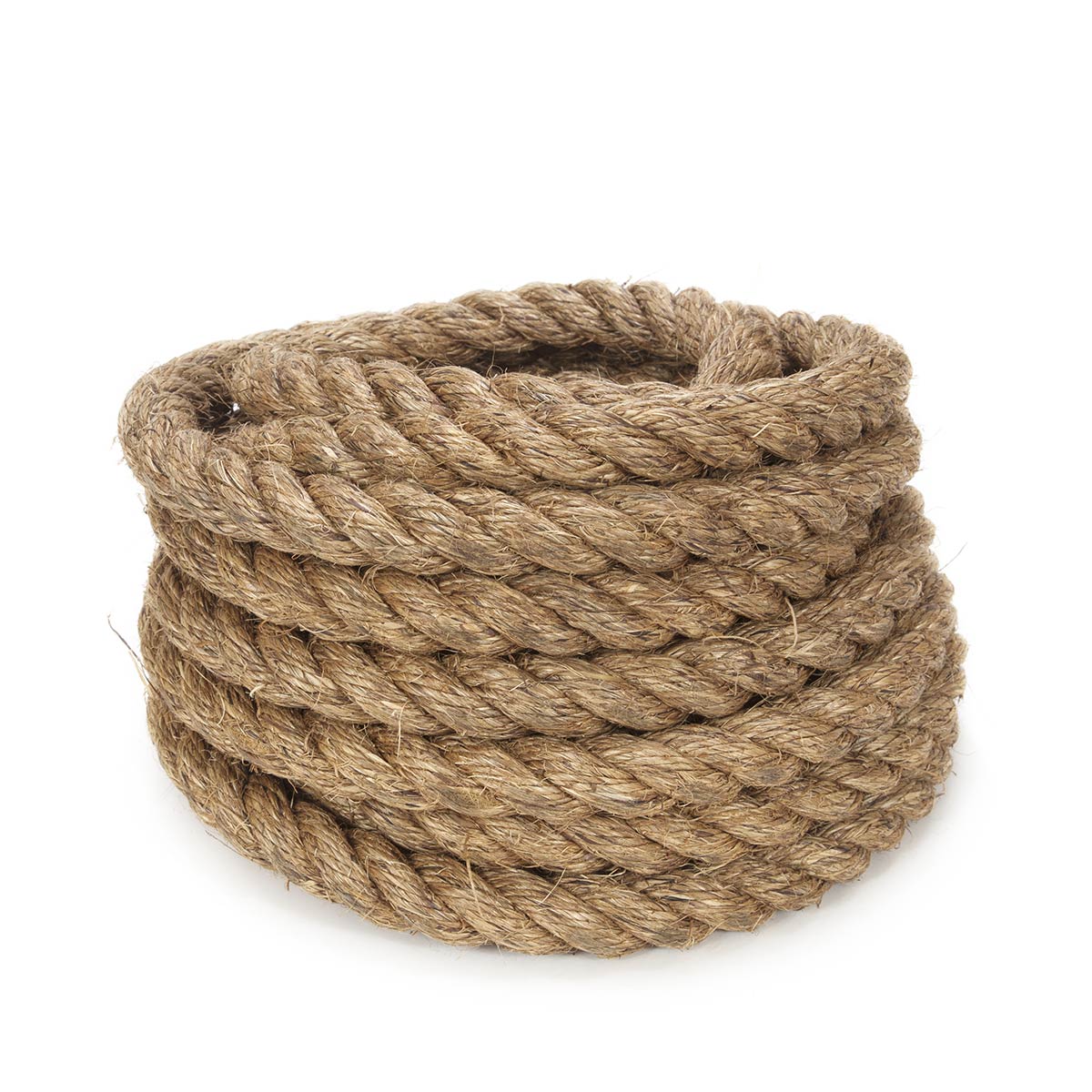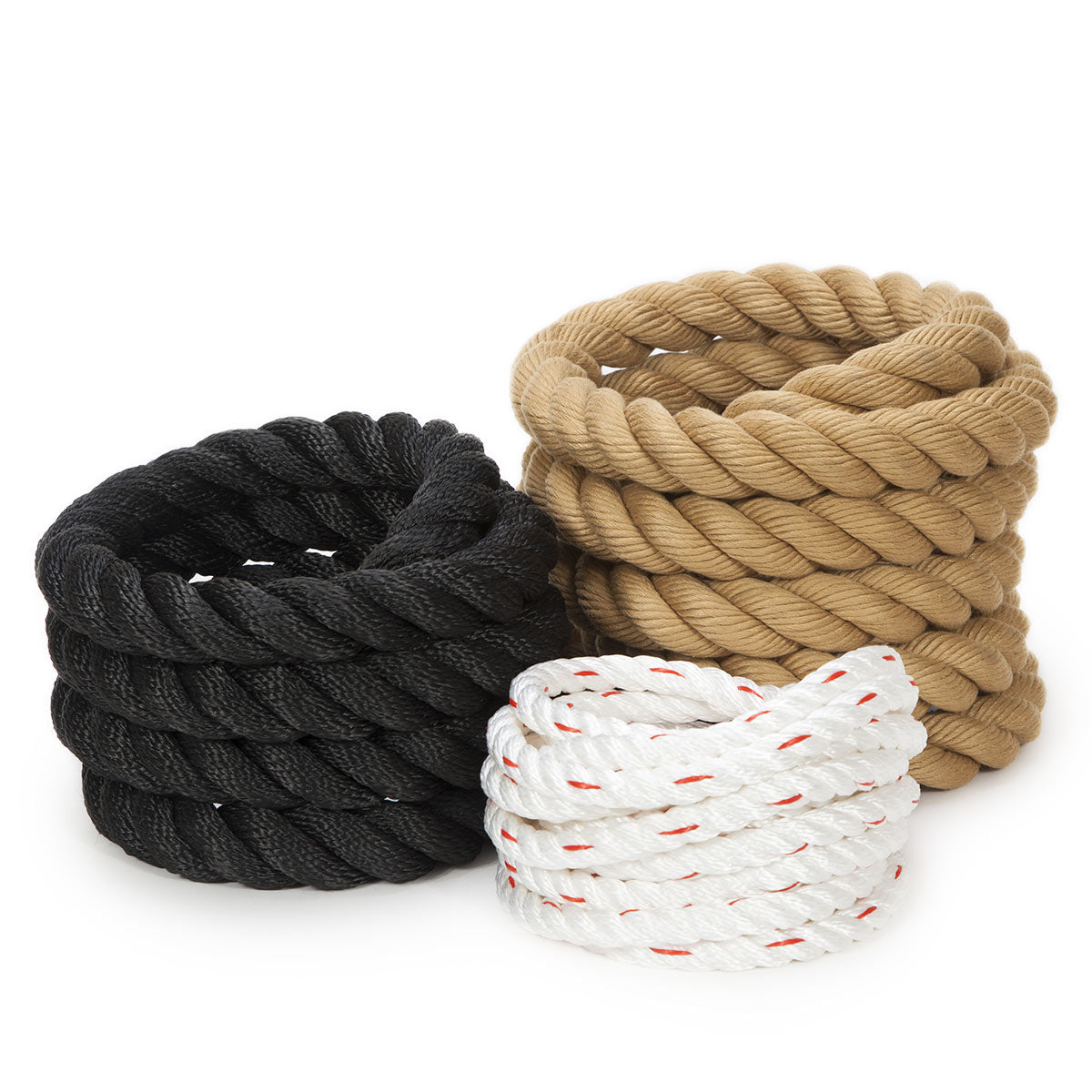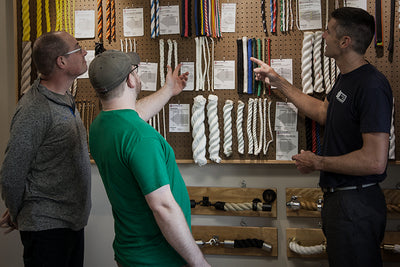(419) 873-8300
The Best Exercise Ropes
In a time when the home gym grows increasingly popular by the day, it’s worthwhile to study up on what equipment you plan to fill your home with. Ropes are a great way to diversify your home gym experience and hit some of those core muscle groups you otherwise might have missed. Countless workout variations can be achieved with only a few variations of the rope itself. The most common gym ropes are typically 3 strands, 1 ½” in diameter, and made from traditional manila or a polyester and polypropylene combination (poly combo). Let’s talk about what makes these the best choice for you.

The abacá plant, grown primarily in the Philippines, is harvested for its long manila hemp fibers to make rope. The fibers come from the bark of the plant so it feels quite rough to the touch, perfect for gripping. The texture and low price point of manila rope are without a doubt its biggest benefits, but this material is not without its limitations. Being a natural fiber, friction will break down the manila over time leaving a considerable amount of dust on your floor after each use. If you mean to use manila as a battle rope, you will be cleaning quite a large area. If you’re using manila as a climbing rope, make sure you always check the integrity of your rope before climbing and follow the suggested weight limits. Deterioration of the fibers can cause the rope to break mid-climb so it’s best to err on the side of caution.

Poly combo is made up of 2 different types of plastic-based fibers. Each of the 3 strands has a polypropylene core covered in a polyester jacket, this is to give the outside of the rope a much smoother feel without having to pay for a completely polyester product. With that being said, poly combo still runs nearly twice the price of traditional manila, but the synthetic fibers are more than twice as strong and will never break down. That means, whether you make it a battle rope or climbing rope, no mess or replacements, not in our lifetime anyway. One small downside to this rope, the polyester jacket can be a little slick, making it slightly more difficult to climb than the ultra-grippy manila. It is still good practice to check the integrity of your climbing rope before use, no matter how strong.
When it comes down to it, both of these ropes will get your desired result: a good workout. Manila rope is inexpensive with a fantastic grip texture, while poly combo will hold twice the weight and last an eternity. Hands down, these are the best ropes to install in your home gym. Have fun and climb with care!

Knot & Rope Supply

MANILA ROPE IS A CLASSIC
This rope is a long time favorite for a large variety of uses. To protect your rope and make it work better for you, consider our eye splicing and end whipping.
Manila is one of the most popular ropes for landscaping use. This rope shrinks 10 - 15% when it gets wet, so if you plan on using this outside be sure to factor that in.

POLYESTER COMBO (Poly Dacron)
This rope is a combination of polyester for the outer strands and polypropylene for the inner stands. Lighter in weight, but still soft and silky in feel, combo rope is very popular for everything from rope railings to exercise climbing rope.

